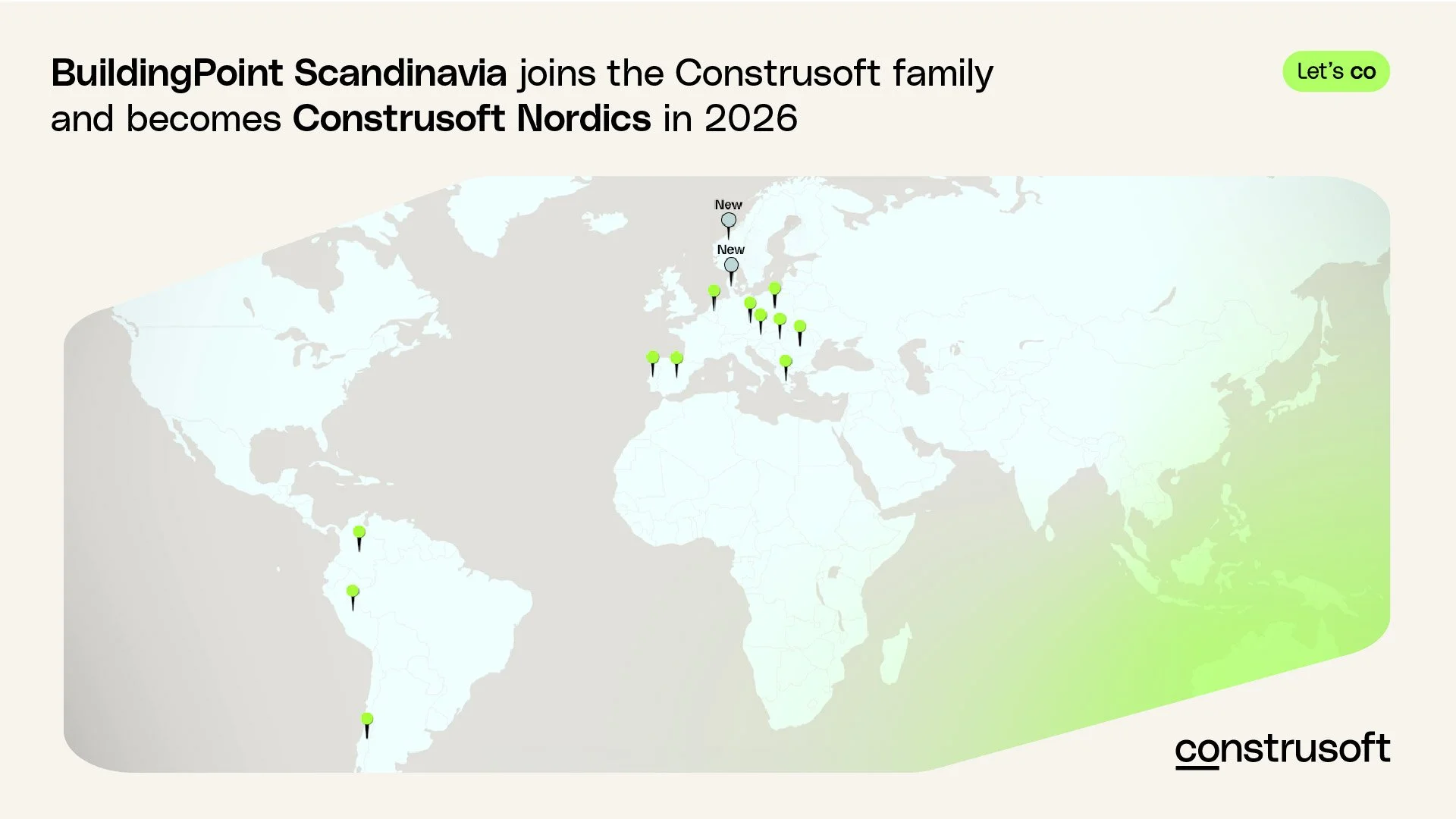WINNER of the Regional BIM Awards 2022
Efficient design of timber façade cassettes for a pioneering residential project with green ambitions!
Artelia has been judged the winner of the regional Tekla BIM Awards 2022 by the BuildingPoint Scandinavia jury, responsible for the competition in Norway and Denmark!
The combination of Tekla, parametric design and Open BIM was the winning formula for the design of the residential project UN 17 Village. The combination made it possible to quickly extract data from different sources and automatically generate workshop drawings of timber façade cassettes at a large scale.
The jury also appreciated the way Artelia demonstrates how BIM can help drive Sustainability in construction projects through cost efficient and innovative design exploration!
VIDEO: Interview with Peter Mortensen of Artelia on the construction site of the winning project, the UN17 Village.
OBS: At the time of the interview, the company was named MOE A/S
The Vision
The vision behind the UN17 Village is to address the UN’s Sustainable Development Goals in a 35,000 m2 housing project on the tip of Ørestad in the capital region of Denmark.
To explore the potential of different sustainable solutions, one of the residential blocks, Building E, is designed as a 7-storey wooden structure which will become the tallest timber construction in Denmark to date. While Artelia also used Tekla for the design of this specific building structure, this submission will focus on Artelia’s efficient design of timber façade cassettes for buildings E, A, C and D.
Artelia created an automated workflow that combines Tekla with parametric design and extracts data from different sources to quickly model the cassettes and produce large quantities of workshop drawings ready for production.
IMAGE: UN17 Village
Developing a more sustainable concept
IMAGE: Wiew from the building during construction
The first step was to develop a general structural concept for the cassettes which was achieved through an iterative process between Artelia and the contractor CG Jensen. To significantly reduce the amount of waste, the concept was designed to consist of timber elements matching the lengths of timber avail- able from the supplier to the extent possible. Furthermore, the design team found a way to avoid using laminated timber which resulted in a considerable CO2 reduction and a cost reduction of 2 mDKK for one building.
With the help of Tekla Structures, the concept was easily made adaptable and optimised while Tekla served as the visual tool and platform for collaboration to ensure proof of concept. When the general design concept was in place, a small number of Tekla components were developed based on the design to enable the parametric modelling and controlling of all the cassettes in Rhino Grasshopper via the Grasshopper-Tekla Live Link.
Combining data
IMAGE: Window cassettes wrapped in moisture protection until mounting.
Despite the general design concept, the line of cassettes contains many variations and different attributes to comply with the diverse building designs. Each cassette is produced as a fully functional unit, complete with weatherboarding on one side, plywood on the other and mounted with doors/windows including fittings and sills. The cassettes are also wrapped for moisture protection for outdoor storage until mounting and fitted with a lifting system for CLT . Building E was designed as the project’s first residential block, and it alone contains 331 cassettes representing a large amount of varying data.
It would have been a time-consuming task to stick to conventional modelling and manual typing of all the different inputs.
The incoherence between different building models and data is a well-known challenge in many building projects where automation would be valuable, and this project proved to be no exception. The structural design is produced in Tekla Structures whereas the architects use Revit for their design which contains information regarding the location and properties of windows and doors. In addition, the window manufacturer provides data for the windows while the contractor provides information about the production flow and mounting schedule.
IMAGE: Rhino Grashopper
The solution was to use Rhino-Grasshopper for the parametric design which made it possible to generate the multitude of cassettes with the homemade Tekla Components. An impor- tant precondition for this solution to work was the ability to extract and combine data from both Revit, Excel and Tekla.
To begin with, Artelia defined the attributes needed for each cassette and developed a data structure for how to compile data from different sources. The link in the data structure and the relation between all models were made by comparing the three-dimensional locations of all the elements.
Thanks to Grasshopper-Tekla Live Link and Revit plugins, the data was easily integrated into Rhino Grasshopper. Data from the window manufacturers and architects' Revit models were extracted directly. Some attributes such as materials, id-numbers, dimensions, etc. were transferred directly to the structural model in Tekla using the developed data structure. Some data was temporarily transferred into a spreadsheet for final review and editing depending on the quality of the source model.
IMAGE: Tekla component, template for the design of window cassettes.
Following this exercise, Rhino Grasshopper automatically feeds data to the application Tekla Component which serves as a template for the design of cassettes. For this to work, Artelia designed the template to match the applied data structure and information needed for every cassette. The Tekla component is distributed as multiple instances of the different cassettes into the Tekla building model which then generates production-ready drawings for the manufacturer. The production of drawings is made possible due to the very detailed cassette models which have a LOD of 450. The Tekla Model also formed drawings for visualising the installation plan.
With this workflow, Artelia eliminated the repetitive and conventional modelling with help from computational design and new ways of using the interoperability between different programmes.
The use of parametric designs enabled Artelia to incorporate the changes from the architect automatically, as the project proceeded and the final design came into being. When Artelia defined the rules and method for the first cassettes for Building E, they laid the groundwork for the design of the following buildings.
The future potential
The combination of Tekla Structures, parametric design with Rhino Grasshopper and open BIM has proved its worth in this project. The trinity is already famous for solving challenges concerning advanced structures. However, this project demonstrates the positive impact the automation process can have on common building projects also in terms of efficiency. Especially because the final product is production-ready drawings.
In the ongoing mass production of commercial and residential projects with less challenging geometry, the building industry tends to stick to the traditional procedures and continue with business as usual, wherever innovation does not seem essential for getting the job done. However, their results show great potential for automated workflows in Tekla Structures and computational BIM, even if it requires a little more preparational work in terms of time, innovation and technical efforts.
The Jury congratulates Artelia for the award and sends the team a big thank you for the contribution with this project which is inspiring on multiple levels!
The Jury also thanks everyone submitting a project to the Tekla BIM Awards and wish all the Global participants good luck in the Global Tekla BIM Awards competition.
IMAGE: Artelia employees at the construction site of the UN17 Village
MORE NEWS
About Artelia
Artelia is one of Denmark's largest consulting engineering companies with more than 1,100 employees spread over nationwide offices and subsidiaries in Norway and the Philippines respectively.
The Artelia Group – a multidisciplinary engineering group specializing in construction, infrastructure, water, energy and industry has 6,700 employees. Internationally, the group has offices in more than 40 countries in Europe, Africa, the Middle East, Asia and America.
About Tekla BIM Awards
As regional reseller of the Tekla software, BuildingPoint Scandinavia organizes Local Tekla BIM Awards in Norway and Denmark during spring 2022 followed by a Global competition in the fall of 2022.
The winners of Local Tekla BIM Awards 2021 and 2022 are eligible to enter the Tekla Global BIM Awards, the biennial global final.
About Tekla Software
Tekla software is developed by Trimble. Tekla is is Building Information Modeling software used in countless project world-wide.



















